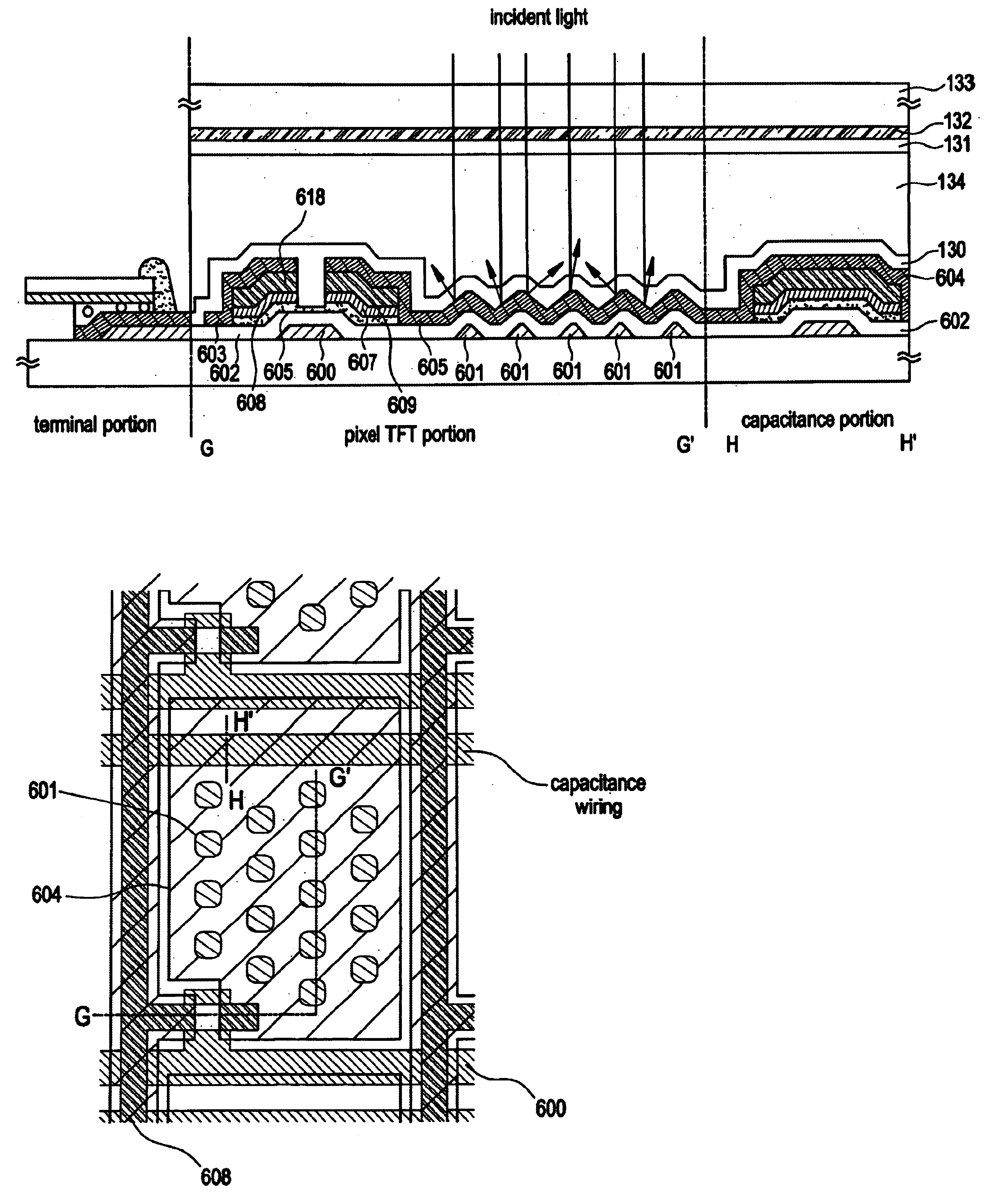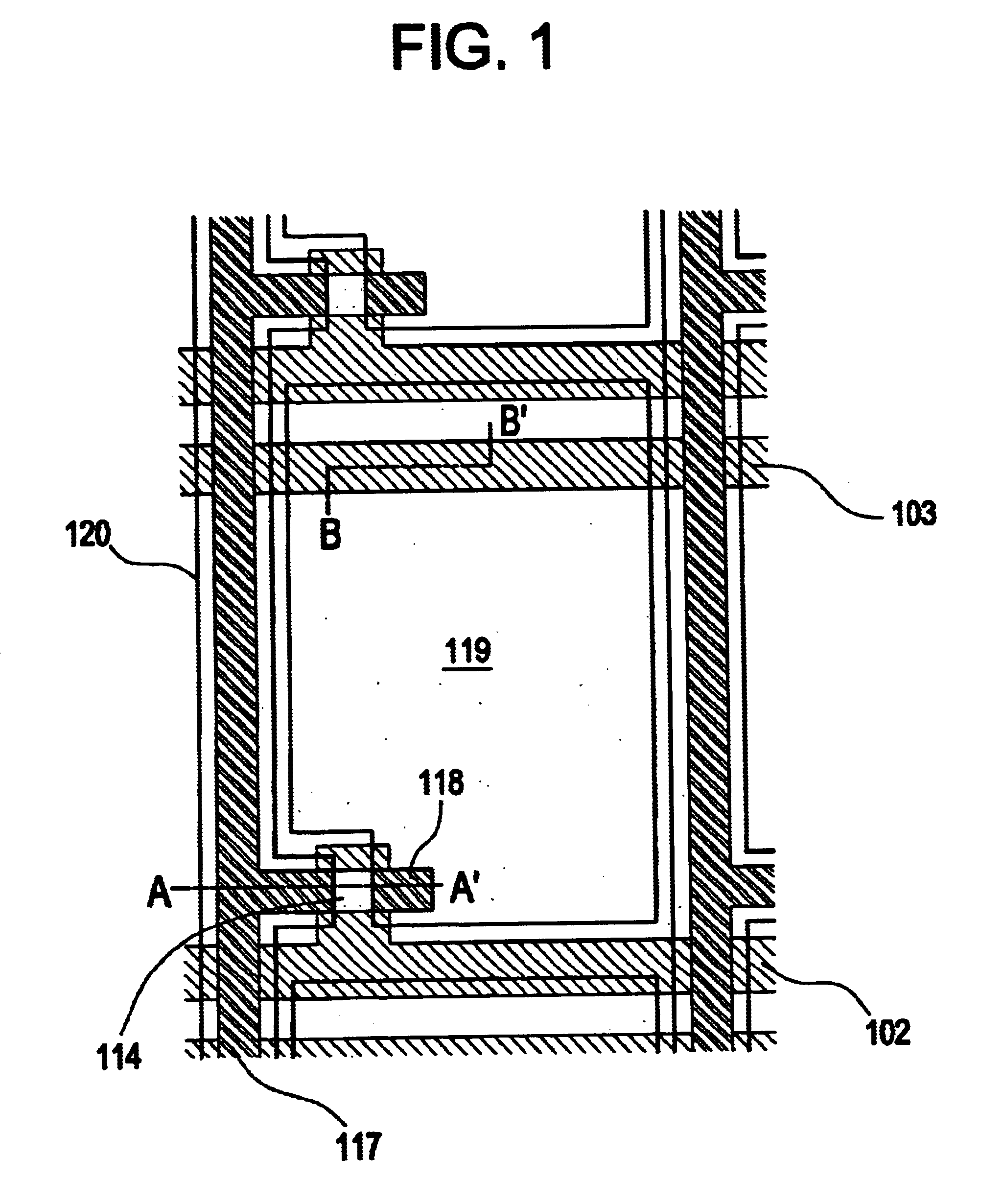Semiconductor device and manufacturing method thereof
- Summary
- Abstract
- Description
- Claims
- Application Information
AI Technical Summary
Benefits of technology
Problems solved by technology
Method used
Image
Examples
embodiment 1
[0107]An embodiment of the invention are explained using FIGS. 1 to 6. Embodiment 1 shows a method of manufacturing a liquid crystal display device, and a detailed explanation of a method of forming a TFT of a pixel portion on a substrate by a reverse stagger type TFT, and manufacturing a storage capacitor connected to the TFT, is made in accordance with the processes used. Further, a manufacturing process for a terminal section, formed in an edge portion of the substrate, and for electrically connecting to wirings of circuits formed on other substrates, is shown at the same time in the same figures.
[0108]In FIG. 2(A), a glass substrate, comprising such as barium borosilicate glass or aluminum borosilicate glass, typically Corning Corp. #7059 or #1737, can be used as a substrate 100 having translucency. In addition, a translucent substrate such as a quartz substrate or a plastic substrate can also be used.
[0109]Next, after forming a conductive layer on the entire surface of the subs...
embodiment 3
[0144]The reverse stagger type n-channel type TFT and the storage capacitor, protected by the inorganic insulating film, can thus be completed in Embodiment 3 by performing the photolithography process using four photomasks four times in total. By thus structuring the pixel portion by arranging these into a matrix state corresponding to each pixel, one substrate for manufacturing the active matrix electro-optical device can be made.
[0145]Note that it is possible to freely combine the constitution of Embodiment 3 with that of Embodiment 1 or Embodiment 2.
[0146]In Embodiment 1 an example centering on forming an insulating film, a first amorphous semiconductor film, a second amorphous semiconductor film, containing an impurity element which imparts n-type conductivity, and a first conductive film by sputtering, but Embodiment 4 shows an example of using plasma CVD to form the films.
[0147]The insulating film, the first amorphous semiconductor film, and the second amorphous semiconductor...
embodiment 4
[0148]In Embodiment 4, a silicon oxynitride film is used as the insulating film, and formed with a thickness of 150 nm by plasma CVD. Plasma CVD may be performed at this point with a power supply frequency of 13 to 70 MHz, preferably between 27 and 60 MHz. By using a power supply frequency of 27 to 60 MHz, a dense insulating film can be formed, and the voltage resistance can be increased as a gate insulating film. Further, a silicon oxynitride film manufactured by adding N2O to SiH4 and NH3 has a reduction in fixed electric charge density, and therefore is a material which is preferable for this use. Of course, the gate insulating film is not limited to this type of silicon oxynitride film, and a single layer or a lamination structure using other insulating films such as s silicon oxide film, a silicon nitride film, or a tantalum oxide film may be formed. Further, a lamination structure of a silicon nitride film in a lower layer, and a silicon oxide film in an upper layer may be use...
PUM
 Login to View More
Login to View More Abstract
Description
Claims
Application Information
 Login to View More
Login to View More - R&D
- Intellectual Property
- Life Sciences
- Materials
- Tech Scout
- Unparalleled Data Quality
- Higher Quality Content
- 60% Fewer Hallucinations
Browse by: Latest US Patents, China's latest patents, Technical Efficacy Thesaurus, Application Domain, Technology Topic, Popular Technical Reports.
© 2025 PatSnap. All rights reserved.Legal|Privacy policy|Modern Slavery Act Transparency Statement|Sitemap|About US| Contact US: help@patsnap.com



